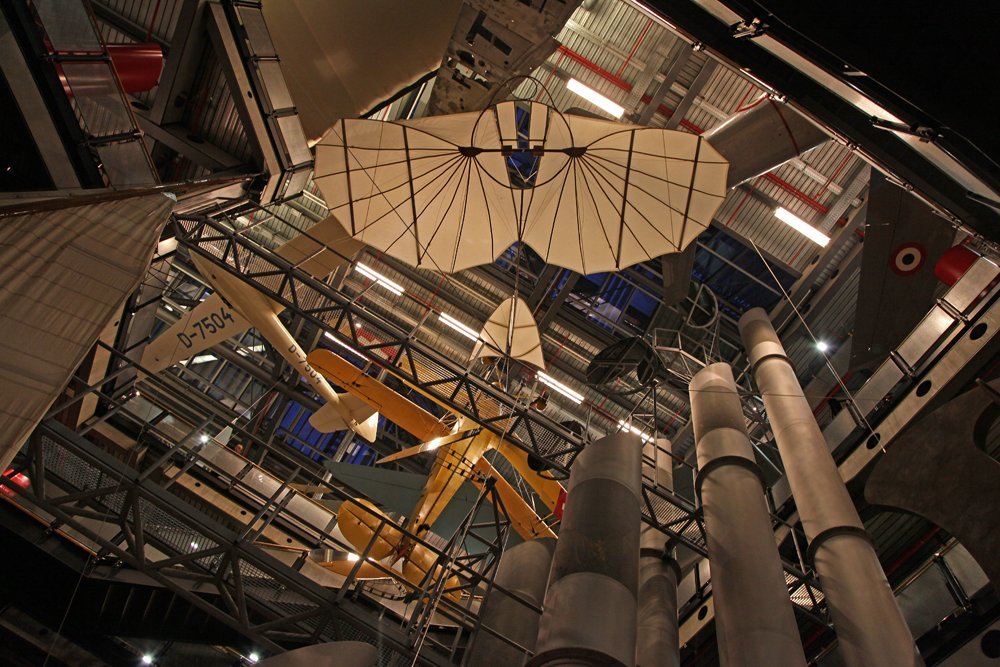
In gathering with the committee that is trying to make Fanoe’s World Wind Center a reality, we were treated to an after-hours tour of Windstarken, by its curator, Martin Mohn. Windstarken, a special exhibit in just a small part of the Deutches Technik Museum, has been a great success since its opening in October of 2011, and has been extended at the museum through the end of October 2013. Already, over 450 groups comprising over 10,000 schoolchildren have visited the exhibit and with another school year just starting, that number is likely to double. Already the exhibit has been accompanied by family celebrations, lectures, radio discussions, and workshops. A memorable moment for Martin, when asking a school group to describe the wind, was when one child said, “the wind is blue”.
Windstarken literally is translated as “wind strength”, and indeed the exhibit shows the power of the wind, literally and figuratively. From a tree, broken by the wind, to artwork inspired by the wind, to power stations powered by the wind, Windstarken takes the museum-goer on a journey with the wind. The exhibit is cleverly organized for student groups to learn what makes the wind, how the wind plays to our sense of fantasy, how it has been harnessed for fun and industry, and how it might be used in the future.
Overlooked uses of the wind are explained by common objects included in the exhibit. Weather vanes show wind direction and help to predict coming storms, while noise-making scarecrows keep birds from eating crops. Children the world over fly kites for fun and energy is produced from wind-farms sprouting up all over the world. Termite mounds, cooled by wind, create environments that allow the insect to thrive while the albatross would be flightless without the headwind he takes off into.

There are wind-powered novelties as well, a vehicle that travels against the wind, artist Theo Jansen’s Strandbeest, a wind-powered machine that “walks” against the wind, and a student prize-winner for a wind-powered model that also travels against the wind. A wide range of kites is included in the exhibit and shows the diversity of our playful pastime. Chinese dragons are prominently displayed alongside a German Steiff Roloplan, complete with aerial photo rig (my small contribution to the exhibit). Contemporary sport kites and cellular kites give the viewer an appreciation of our kite flying passion.
From the Aztec God Ehecatl, to the full size windmill vane set outside the museum, the Windstarken exhibit is a creative effort to tell the power of the wind in all of our lives.
– Scott Skinner

